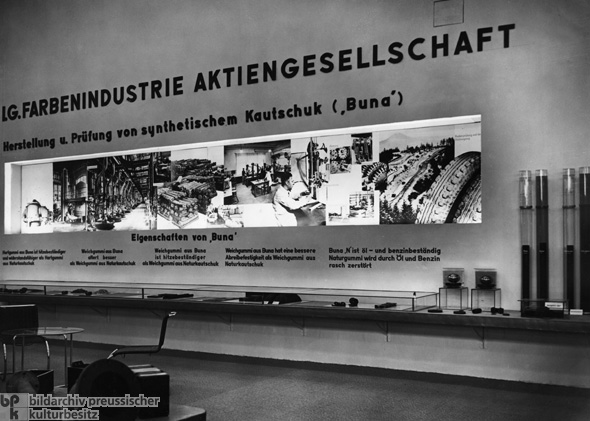













INTRODUCTION | DOCUMENTS | IMAGES | MAPS | EDITOR
|
National Socialist economic policy pursued the main goal of "autarky," that is, total national self-sufficiency. One of the ways it sought to achieve this was by synthesizing raw materials needed for war, such as gasoline, rubber, and fibers. The Syndicate of Dyestuff-Industry Corporations [Interessengemeinschaft Farbenindustrie AG, or I.G. Farben, for short] was especially involved in the production of substitute material. During the course of Germany’s industrial war preparations, it grew to become the largest company in Europe. In December 1933, I.G. Farben and the new Nazi government signed the so-called gasoline contract, a minimum price and marketing contract for its otherwise uncompetitive synthetic fuel. Between 1940 and 1944, about 50% of German petroleum requirements were met by synthetic fuels. After 1936, the influence and importance of I.G. Farben in the National Socialist military economy grew so much that some historians now refer to the Four-Year Plan as the "I.G. Farben Plan." The firm played a major role in developing and implementing the autarky and armament plans that were supposed to make Germany ready for war within four years. One key element in these plans was the production of synthetic rubber ("Buna"), which would be used for manufacturing tires. Mass production began in 1939; from 1941 on, it was carried out in the Auschwitz III-Monowitz labor camp, among other places.
© Bildarchiv Preußischer Kulturbesitz / Werkfoto |
 print version
print version return to image list
return to image list previous image
previous image
